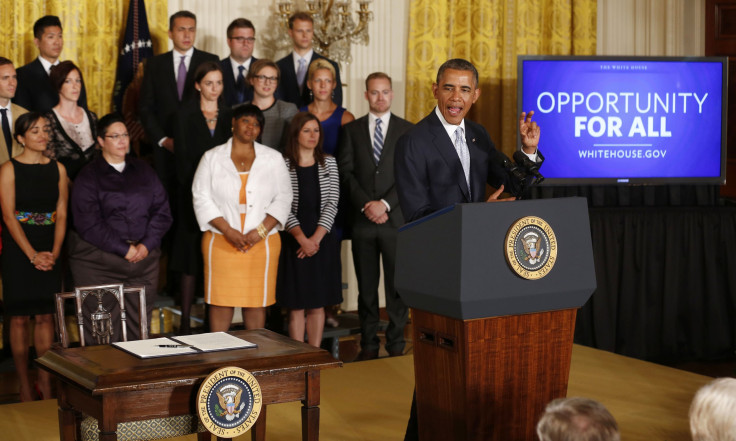President Obama Unveils Aggressive Plan To Ease Student Debt Burden

U.S. President Barack Obama on Monday unveiled his proposals to help ease the financial burden on Americans saddled with record student debt, including an income-adjusted monthly payment cap.
The president also urged Republicans in Congress to act on Democratic-sponsored bills to relieve young Americans of some of the more than $1 trillion of outstanding student loans.
“In a 21st century economy, a higher education is the single best investment people than make for themselves and their future,” the president said at a White House event on Monday. “At a time when higher education has never been more important, it’s never been more expensive.”
The president's plan would extend the four-year-old Pay-As-You-Earn (PAYE) initiative that caps monthly student loan payments to 10 percent of discretionary income to students who borrowed for their higher education for the first time between 2008 and 2011. Obama's executive order signed Monday extends that eligibility to anyone with a student loan.
At Monday’s White House press conference, the president also vowed to renegotiate student loan terms with student lender SLM Corp. (NASDAQ:SLM), more commonly referred to as Sallie Mae, and to work with professional and nonprofit groups like teachers' associations and the YMCA, to help educate student loan debtors about their options.
SLM’s share price has fallen almost 66 percent since talk of renegotiating Sallie Mae's terms first surfaced in April and it now trades at $8.89 a share.
The White House 2015 budget proposal includes the expansion of student loan repayment rules that would add $7.3 billion to the national deficit between 2015 and 2019 (pdf).
That's too much for some critics.
"A bailout of student debt holders merely shifts the costs to future students and young taxpayers, without recognizing that government meddling in higher education and student loans is the real problem,” Evan Feinberg, president of Generation Opportunity, a group that advocates for millennial-aged job seekers, said in an emailed statement on Monday.
The average U.S. college graduate owes nearly $30,000, more than what they owe in credit card debt by that time, President Obama said. Data show that high student debt impedes economic activity in post college years and prevent debtors from buying homes and cars.
The president urged Republican members of Congress to support his measures to help students with the same enthusiasm they apply to tax breaks for the rich. The New York Times said in a report Monday that bill would cost the federal government $58 billion and would raise $72 billion through a new tax on the wealthy.
A Harvard University Institute of Politics poll that tracks the opinions of Americans aged 18 to 29 shows the president’s approval rating stands at 47 percent, up from 41 percent in November, which was the lowest since the poll began tracking in November 2009. Young Democrats and minorities still show strong support for the president, but approval from young white Americans is at historic lows. Fewer than 40 percent of young independents approve of Obama’s performance, but that figure is up from 31 percent in November.
Obama had said earlier that he would call on Education Secretary Arne Duncan to draw up new rules that would expand monthly pay caps on student loan repayments to “more than five million” student-loan debtors nationwide.
© Copyright IBTimes 2025. All rights reserved.






















